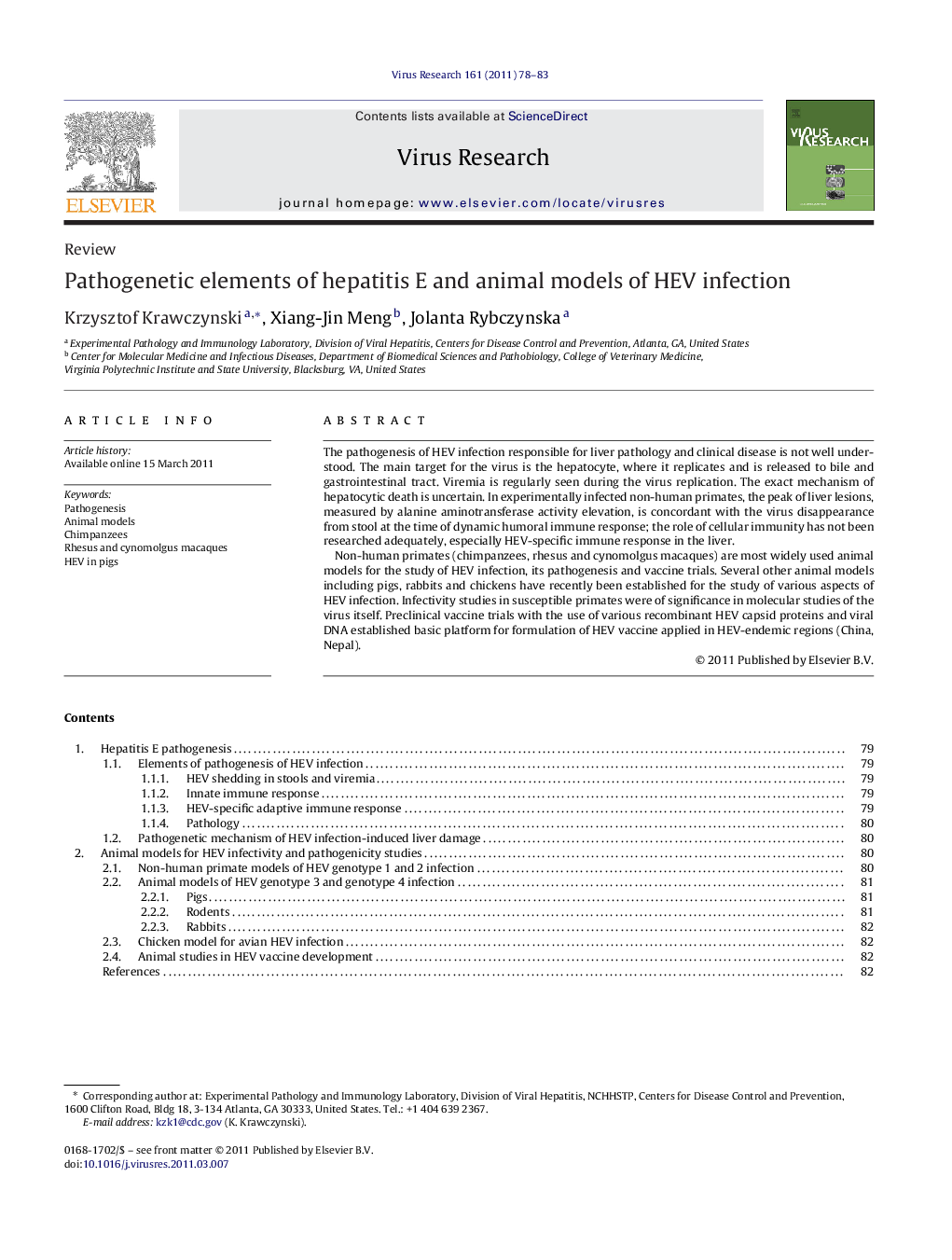| کد مقاله | کد نشریه | سال انتشار | مقاله انگلیسی | نسخه تمام متن |
|---|---|---|---|---|
| 3428977 | 1228234 | 2011 | 6 صفحه PDF | دانلود رایگان |

The pathogenesis of HEV infection responsible for liver pathology and clinical disease is not well understood. The main target for the virus is the hepatocyte, where it replicates and is released to bile and gastrointestinal tract. Viremia is regularly seen during the virus replication. The exact mechanism of hepatocytic death is uncertain. In experimentally infected non-human primates, the peak of liver lesions, measured by alanine aminotransferase activity elevation, is concordant with the virus disappearance from stool at the time of dynamic humoral immune response; the role of cellular immunity has not been researched adequately, especially HEV-specific immune response in the liver.Non-human primates (chimpanzees, rhesus and cynomolgus macaques) are most widely used animal models for the study of HEV infection, its pathogenesis and vaccine trials. Several other animal models including pigs, rabbits and chickens have recently been established for the study of various aspects of HEV infection. Infectivity studies in susceptible primates were of significance in molecular studies of the virus itself. Preclinical vaccine trials with the use of various recombinant HEV capsid proteins and viral DNA established basic platform for formulation of HEV vaccine applied in HEV-endemic regions (China, Nepal).
Journal: Virus Research - Volume 161, Issue 1, October 2011, Pages 78–83